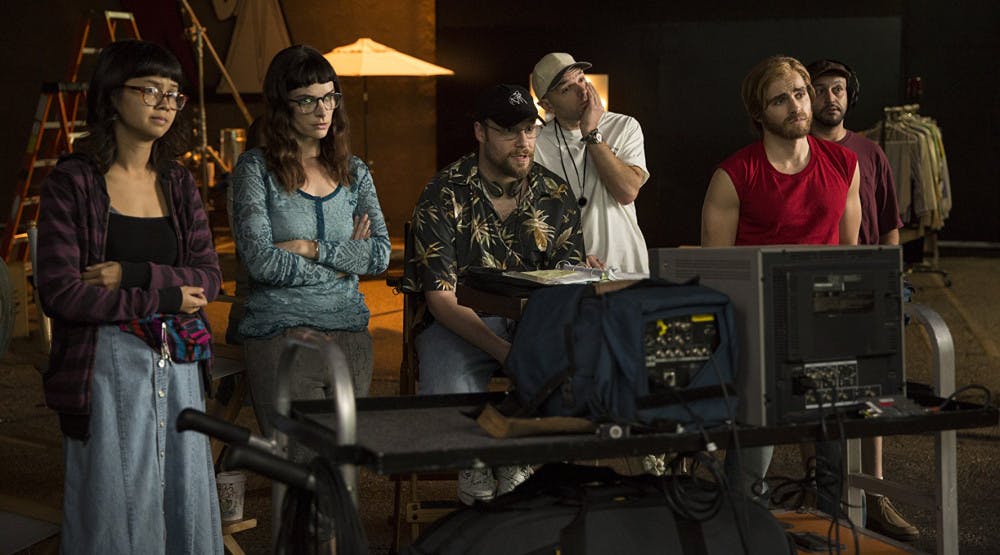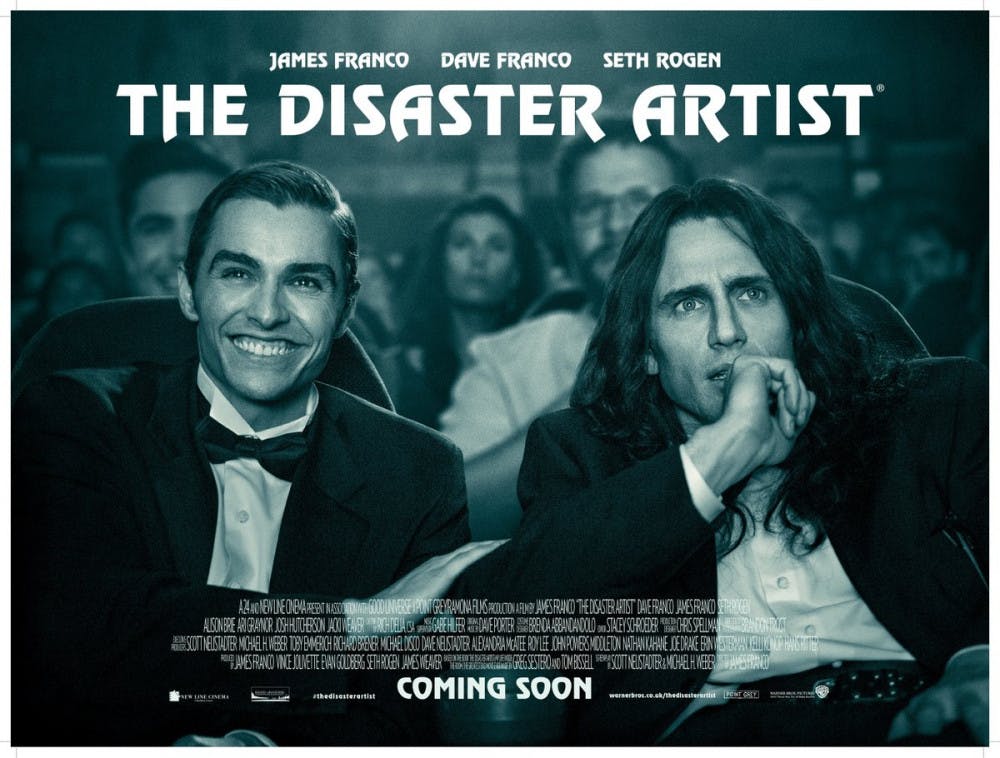by Ryan Fine What makes Tommy Wiseau’s The Room such a brilliant film is that from an objective standpoint, it’s one of the worst movies anyone has ever made. You can dissect and analyze what makes The Room bad in exactly the same way you can analyze what makes The Godfather good. In the 15 years since it was first released, its spectacular failure has turned it into a cult classic and a shining pinnacle of so-bad-it’s-good media. Now, in an attempt to answer some of the many questions surrounding the film, James Franco has concocted The Disaster Artist, an unconventional movie-about-a-movie based on Greg Sestero’s book of the same name. Not only does The Disaster Artist manage to pull off a coherent story based on one of the least coherent stories of all time, but this is actually the first great movie James Franco and Seth Rogen have ever made.
Playing the impossible character
Where is Tommy Wiseau from? How did he get the money to make The Room? How old is he? All of these questions and more are asked of Wiseau in The Disaster Artist, but he answers none of them and hasn’t done so in the real world either. Considering that Wiseau is one of the most mysterious figures on the planet, James Franco had his work cut out for him trying to portray him on the big screen. But man, did he pull it off.
The story and the story within the story
There’s a reason this movie’s title refers to its source material openly as a disaster. Tommy Wiseau, bent on trying to present The Room as a “real Hollywood movie”, forgot to make sure that it was actually a coherent work of art first and foremost. Its countless sins include repeating lines far more times than necessary, introducing an entire cancer plot and immediately abandoning it, and even planting an entire new character into the last act with no introduction and expecting us not to notice. But The Disaster Artist isn’t The Room, it’s just a documentation of how The Room happened. And that’s an important distinction, because there are two levels of storytelling going on here at any given time. The marriage of the real-world story of Tommy and Greg with the cinematic story of Johnny and Mark is one of the strong points of The Disaster Artist.
“If a lot of people love each other, the world would be a better place to live”
Some of the strongest areas of The Disaster Artist are its personality and its faithfulness. It’s a hilarious movie, and although well-deserved credit should be given to the writers and actors, much of that humor comes directly from the fact that it’s a movie about Tommy Wiseau. And that’s not to mock him; Tommy Wiseau is a legitimately interesting person and he’s a lot of fun to watch on screen. The heart that he puts into his work is unmatched by just about anyone else in the industry, regardless of how it turns out. The chemistry between Tommy and Greg is bizarre but magnificent. Tommy’s early interactions with Greg’s mother as the two are about to move in together are hysterical, as is Tommy’s attempt to make up for his mistakes by injecting them into his screenplay. The Disaster Artist is James Franco’s most critically successful film to date, and that’s because he didn’t have to try to make it funny. He just told the story as it happened, and if it turned out to be funny all the better. Most of the re-shot scenes from The Room are stunningly faithful to the original, done with the same care and respect you would expect from a remake of a movie leagues better. By the end of the movie, it’s hard to avoid laughing at the simple fact that a story like this could possibly be so heartwarming.Featured image from AnyGoodFilms



















